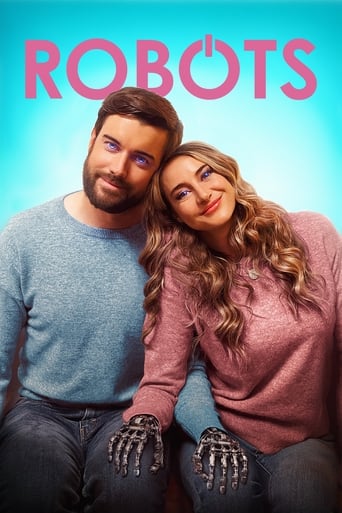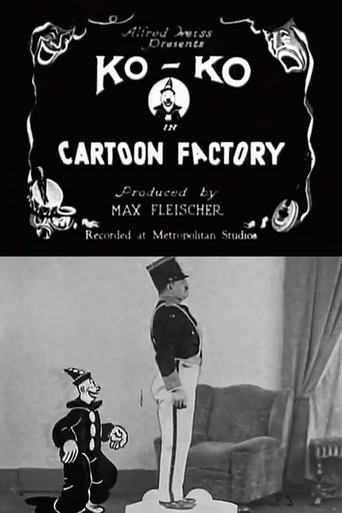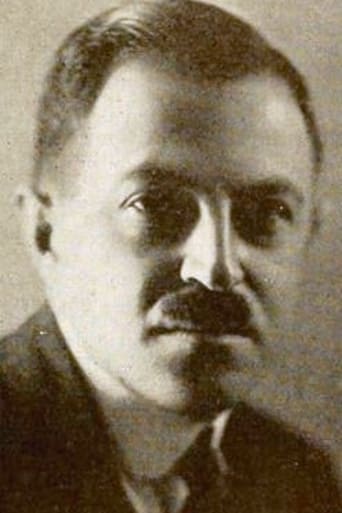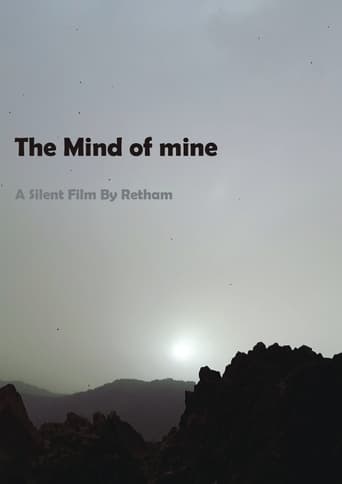Koko the Clown discovers a machine that can make cartoons. Note that there's a re-released version of this short from the 1930s with added music and voice-work.


Similar titles

Reviews
I watched this Max Fleischer/Out of the Inkwell short starring Koko the Clown on the "Saved from the Flames" DVD collection. In this one, Max has Koko literally wired to do his will. Then, using an ink machine, Koko draws a chicken and a woman but the machine erases them both before he eats and kisses them, respectively. So he then goes to a factory and has a large soldier built that looks like Max inhabit his drawn-on-the-outside but photographed-on-the-inside house hoping to control him. But this "Max" then draws-via stop-motion-various soldiers to go after his creation...And so on, pretty amusing and the synchronization of the music and voices are almost perfect. Well worth a look for anyone curious about these silent films that happen to still exist despite the nitrate materials that the movies were printed on then.
This was the first Koko the Clown cartoon I had seen, and I was mightily impressed. The Fleischers had a fairly wild imagination and put it to good use in films such as these in which Max Fleischer interacts with his creation. Their relationship seems to be an adversarial one, for no sooner has Max drawn Koko than he is tormenting him by wiring him to an electrical cable and zapping him with a few volts to make him run. The tables turn, however, when Koko stumbles upon the titular cartoon factory, and it's at this point that things start to get a little surreal. Koko uses the machine to create a toy soldier real-life version of Max and a house - so that, in effect, the cartoons are creating the real world. Koko bombards the toy soldier Max with cartoon cannonballs that become real when they hit their target, and Max responds by drawing an army of cartoon soldiers. The film grows increasingly insane - and more enjoyable - as it moves along, and leaves you wanting more because you feel as if these guys would never run out of wild ideas.The version I saw was on a Retour de Flamme DVD and featured a synchronised soundtrack.
This is another wild Koko The Clown silent cartoon from the genius of Max and Dave Fleischer. It's pretty good when you can still look innovative with animation almost 85 years later! This 1924 effort still is impressive.I really liked Koko running the cartoon machine in which a landscape would be continuously drawn at the top of the page as the machine moved left to right. In fact, most of this cartoon had some very good artwork and, to me at least, I like to see Max's drawing done in higher speed. He's a real artist and you can see a lot of it here in this nine-minute short.Mixed in, as is normal, is some real-life footage. In this cartoon, we get a toy soldier to turns real and begins to draw clones of himself on the walls of a house. The soldiers then attack Koko, who later fights back with a cannon that is drawn but has real-life artillery. As I said, these old silent cartoons were pretty clever.With no music or voices, I guess you had to make up for it with some great visuals to keep the audience attentive. The Fleischer brothers usually succeeded in keeping peoples' interest in their work.
Juxtaposing live action with animation is nearly as old as film animation itself. Emile Cohl and Winsor McCay interweaved live-action narratives about the animator with the animated cartoon. The next step was taken by John Randolph Bray, Walt Disney with his Alice's Wonderland series and the Fleischer Brothers, among others; they created films where the real, live-action world and the cartoon world interact. This particular Fleischer Brothers short, part of their Out of the Inkwell series, is notable for its play on the notion of creators and creations and for an exceptionally well executed version of the battle between creator and creation that usually occurred in the series."The Cartoon Factory" begins, as usual in the series, with Max Fleischer drawing Koko the Clown, who instantly comes to life. Max arbitrarily torments his creation for a while, but then Koko happens upon a drawing machine and shop--a cartoon factory--within the cartoon world, all of which can create live-action within the cartoon world (sometimes merely still photographs). In the Out of Inkwell series, it was the cartoon that usually entered the real universe. But no, here, Koko, who was originally modeled on Max (via Max's invention, the rotoscope, which was abandoned for a more cartoony Koko this episode), eventually creates a toy soldier, which comes to life as the live-action Max. Max sets about drawing subordinate toy soldiers, whom he orders to attack Koko.This animation short features an especially clever exploration of the interactions between the universe of the creator and that of the creation. Koko the Clown was the Fleisher's first popular character, who in his later incarnations was often accompanied by Fitz the Dog, such as in the very inventive, apocalyptic "Ko-Ko's Earth Control" (1928). Koko isn't as well remembered as the Fleisher's later creations Betty Boop and Popeye, but with Felix the Cat and Mickey Mouse, he was one of the first popular and sustained cartoon characters in film history. The interaction between creators and creations, however, were the lasting importance of the Out of the Inkwell series featuring Koko.



